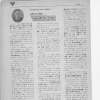필요하신분은 메모를 남겨주시기 바랍니다.
전문 보기 : PeaceCharterwithIntrocutionnotescorrected.doc
A PEOPLE’S CHARTER ON PEACE FOR LIFE
Introduction
A People’s Charter on Peace has been a felt need among peace movements and peace workers for a long time. This is in recognition of two factors: one, there is a new geopolitical context at the beginning of the twenty first century; two, most declarations on peace are from inter‐state or state related institutions. The need was for a peace charter form a people’s perspective.
The international conference (sponsored by WCC, CCA and NCC Philippines) in September 2002 clearly underlined the fact of a new geopolitical context. This was the conference which founded the organization Peace for Life. The conference was one of the first to attempt to define the new context as that of an emerging global empire and more specifically the US Empire. It was felt necessary to rediscover the true meaning of peace in the new context and to affirm a new commitment to peacemaking. For this it was felt that a Charter on peace would be extremely valuable and useful. While many declarations and statements on peace are available there were few models for a peace charter.
The idea of a charter was discussed at a meeting of Peace for Life in December 2005 in Hong Kong and some suggestions were formulated. In October 2006 a Workshop was held in Hwacheon, Korea. Presentations were made at the workshop on a peace charter from various perspectives. At the end of the workshop an outline for a charter was adopted.
In July 2007 a three‐person drafting group met in Hong Kong and worked on the first draft of a peace charter. This was further revised and presented at the International Workshop in Hwacheon at the end of October 2007. On the basis of discussions and suggestions at the Workshop several changes were made.
The People’s Charter on Peace for Life was adopted at the Workshop.
Two terms need some explanation in the Introduction itself. It may be asked whe
.jpg)








.jpg)
